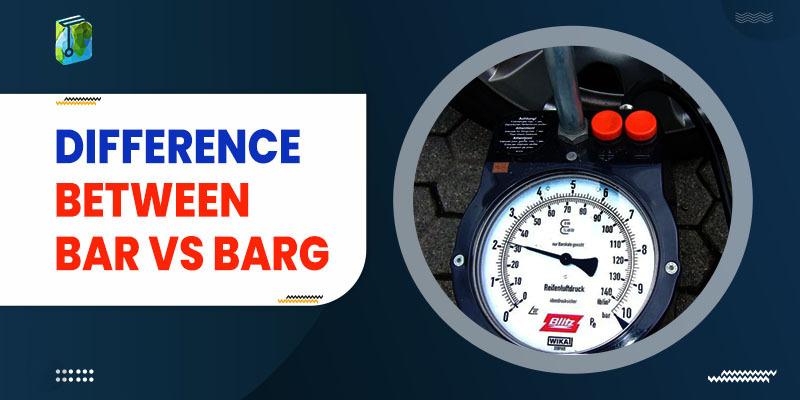The major difference between bar and barg is that bar means absolute pressure, and barg means gauge pressure.
What is pressure? Pressure is defined as the force applied on any given surface. The three types of pressure are Absolute, Gauge, and Differential pressure.
Absolute pressure is a unit measurement taken against a vacuum on an absolute scale. Gauge power is measured against the air pressure. On the other hand, differential pressure is the pressure of an object at two points.
Difference Between Bar And Barg
In this post, we have mentioned the difference between bar and barg in detail.
What is Bar?
The unit measurement bar helps measure any object’s absolute pressure. The metric unit of one bar is equal to 100,000 Pa. Here are some of the units derived from bars:
- Millibar
- Centibar
- Megabar
- Kilobar
- Decibar
Moreover, one bar equals 0.987 atm, 750.06 mmHg, and 14.50 psi (absolute pressure). The standard pressure at sea level is 1013.25 millibar.
Did you know that most engineers use a bar rather than Pascal because the Pascal unit system involves calculations with large numbers?
What is Barg?
Barg is used to measure the gauge pressure. Gauge pressure is the difference between absolute pressure and atmospheric pressure.
Comparison: Bar Vs. Barg
head-to-head comparison table for BarG (Gauge Pressure) and Bar (Absolute Pressure) based on the provided content:
| Feature | BarG (Gauge Pressure) | Bar (Absolute Pressure) |
| Definition | The bar helps to measure absolute pressure. | Brag is the unit of measurement used to measure gauge pressure. |
| Relationship | Measure any pressure by gauge pressure added to the atmospheric pressure. | The difference between and the atmospheric pressure. |
| Example | Finding out the pressure in the vacuum. | Measuring the pressure in an environment that has atmospheric pressure. |
| Calculation | Gauge pressure + Atmospheric pressure | Absolute pressure = Gauge pressure + 1 atmosphere |
| Usefulness | Useful for practical measurements | More technically correct but less practical |
| Typical Reference | Compressor pressure, system pressure | Standard atmosphere, theoretical vacuum |
| Industry Application | Commonly used in pneumatic systems | Less commonly used due to its theoretical nature |
| Conversion | Add atmospheric pressure to gauge pressure | Subtract atmospheric pressure from absolute pressure |
Conclusion
Pressure is the force applied on the surface perpendicularly. There are three types of pressure: differential, Gauge, and Absolute. The bar measurement measures absolute pressure, while the barg measures gauge pressure.
We hope that this article helps you gain a better understanding of the topic.
People are also reading:

